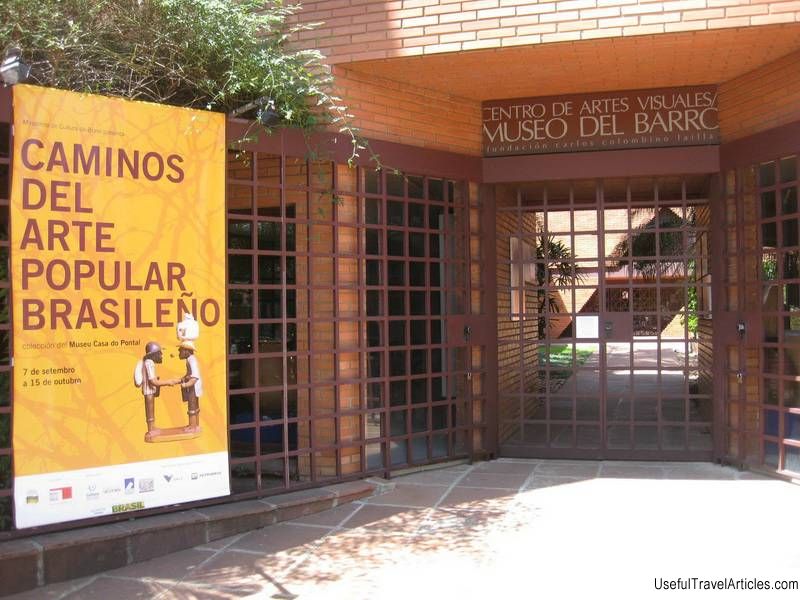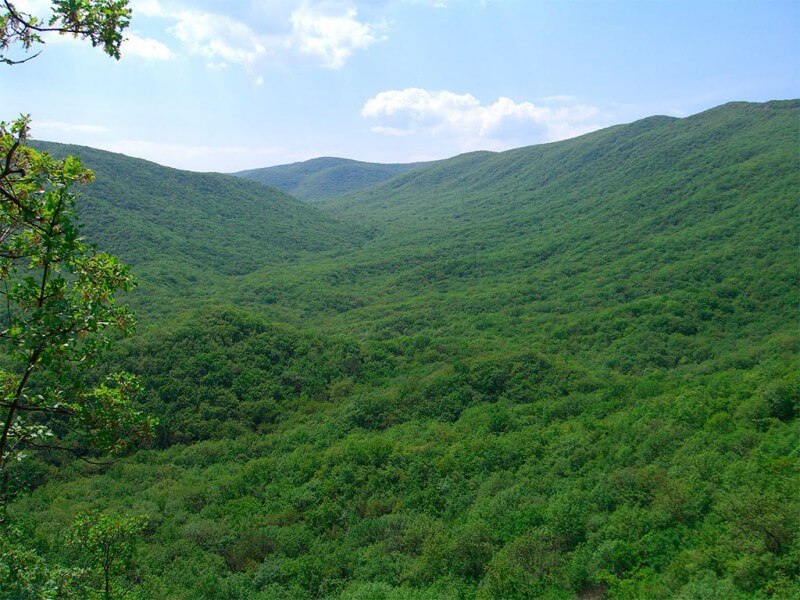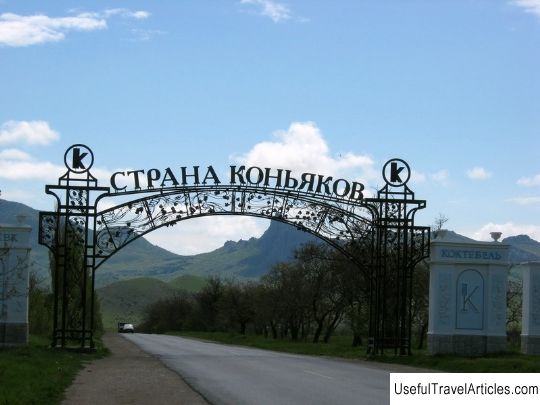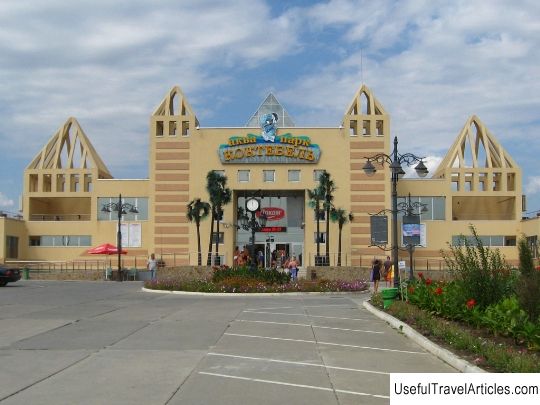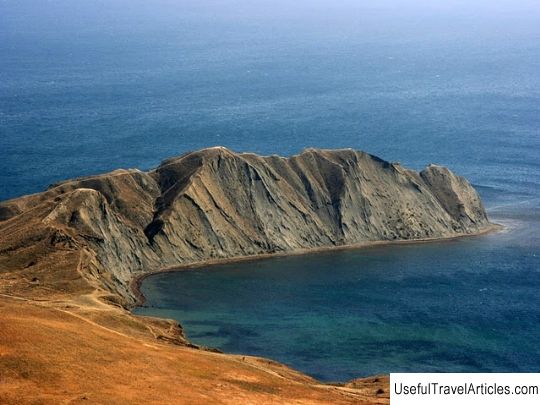House-Museum of M. Voloshin description and photo - Crimea: Koktebel
Rating: 8,8/10 (1243 votes) 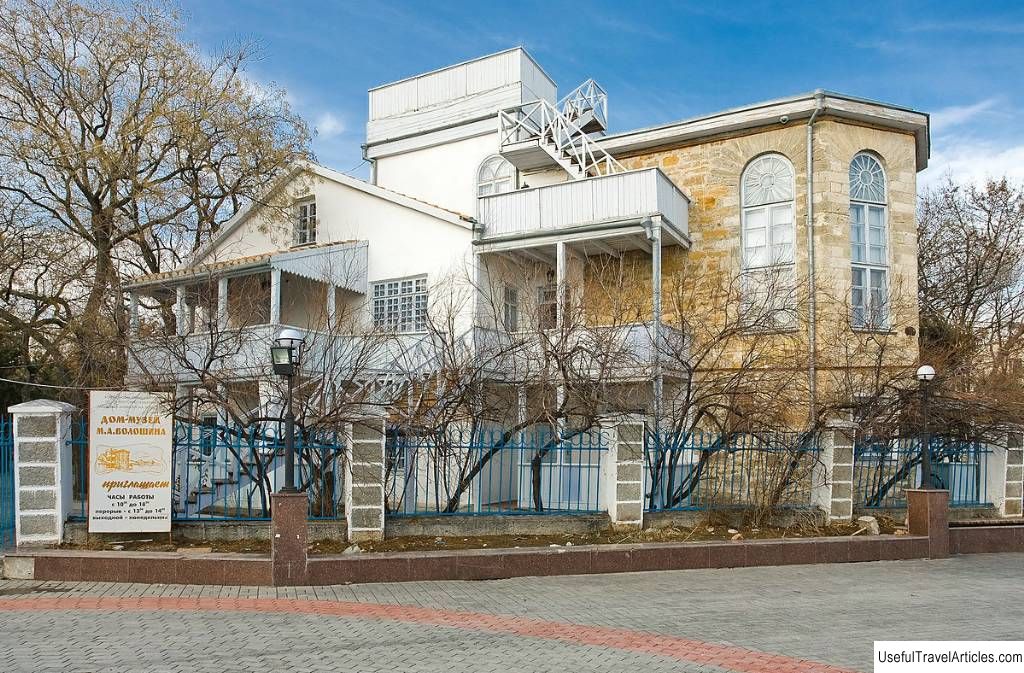
M. Voloshin's house-museum description and photo - Crimea: Koktebel. Detailed information about the attraction. Description, photos and a map showing the nearest significant objects. Photo and descriptionThe famous house of M. Voloshin in Koktebel is a cult place where all the famous representatives of the Silver Age literature came. Marina Tsvetaeva, Nikolai Gumilyov, Andrey Bely, Maxim Gorky have been here ... Maximilian VoloshinThe life of the poet, publicist and artist Maximilian Voloshin was closely connected with Crimea. He was born in Kiev in 1877, but he already studied at the Feodosia gymnasium. Then he entered the Moscow University to study law, but did not finish his studies and left for Paris. During these years, he travels a lot, believing that the earth is a very small planet and you need to have time to visit everywhere. However, the passion for travel - on foot, with a staff, to various not the most famous, but very interesting places - remained with him forever. From the beginning of the 20th century, he began to publish poetry - and entered as his own among the Symbolist poets . He enters not only as a poet, but also as an art critic. His first collection of poetry was published in 1910, and in 1914 his most famous book "Faces of Creativity", a collection of journalistic articles, was published. He lives quite turbulently. Experiencing great love and tragic parting with the exalted artist Margarita Sabashnikova . Comes up with E. Dmitrieva poetess Cherubina de Gabriak, and then in 1909, because of her, he arranged a duel on the Black River with Nikolai Gumilev . Continuously drawing something - sketches, landscapes, cartoons. He not only draws himself, but also writes articles and books about artists, follows fashion trends in painting. For example, it was he, one of the first in Russia, who began to take an interest in the French impressionists. Voloshin during these years was fond of anthroposophy R. Steiner and visits him in Germany. M. Voloshin categorically does not accept the First World War. Doesn't feel any patriotic mood - the war is terrible, and he refuses to participate in this "bloody massacre". However, he is not taken into the army for health reasons. Maximilian Voloshin does not accept violence even in the most famous works of art. After the well-known attempt on the painting of Repin "Ivan the Terrible is killing his son", Voloshin said that the artist had crossed the permissible limit of violence, and he himself provoked it. Voloshin in Koktebel Despite the fact that most of his activities and interests are associated with the capital's literary circles - he periodically returns to Koktebel. Crimea appears to him as a symbolic ancient " Cimmeria " - as these areas were once called by the ancient Greeks. He writes a poetic cycle "Cimmerian Twilight", draws a lot - and the "Cimmerian School" of painting is primarily associated with his name. These are romantic artists, followed by the seascape painter I. Aivazovsky . They created in their works a mysterious, bright and emotional image of the Crimean nature. Voloshin paints Crimean watercolors and signs his landscapes with poetic lines. He himself later admits that it was the Crimean nature that became the best teacher of painting for him. Since 1903 he and his mother begin to build their house in Koktebel. Voloshin's mother was a strong and harsh woman, but they always kept close and lived together. Construction has been going on for almost 10 years: they already live there, but all the time something is being altered and added. The layout of the house was originally designed for many guests: out of 22 rooms, 15 are small guest rooms. Guests were accommodated on the first floor, while the owner himself occupied the second. Voloshin's house in Koktebel becomes a kind of "literary commune" where his friends, writers and artists, come. They have fun, play literary games, pranks, performances, fooling around in every possible way. Voloshin - tall, bearded and apparently respectable - happily leads the whole crowd. But at the same time, he does not get off the ground: he knows how to do carpentry, and take care of the garden, and take photographs. Voloshin spends his revolutionary years in the south. Whites cannot understand in him the absence of hatred for the Bolsheviks, the Bolsheviks - the absence of hatred for whites. In the revolutionary Crimea, through which the waves of turmoil roll, he tries to help everyone who asks for his help, but he himself refuses to leave Russia, like many of his friends and acquaintances. In the early 1920s, he preserves the historical values of Crimea . Many modern museum collections are exactly the values that he saved from ruined estates and palaces. Since 1924, he has been transforming his house into a " House of Creativity " - essentially changing nothing. Artists and writers still come here to see their hospitable host. Voloshin are friends with A. Green , who lives nearby in Feodosia. Until now, the "green" trail through the mountains, along which they walked to each other, is an attraction. Writers of the next, younger generation come here - Mikhail Bulgakov, Vsevolod Rozhdestvensky and others. In 1925, almost 400 people visited it. However, this is not an idyll. Voloshin periodically has to prove that he does not take money from those who come to him (because the Soviet state does not accept such commercial activity). They don't print it. Local authorities put up all sorts of obstacles. In 1929, the poet suffers a stroke. Dies in 1932 in a deep depression: the new Soviet Russia, neither he nor his undertakings are needed. Voloshin Museum The museum was officially opened in 1984. In fact, it owes its existence to the poet's widow - Maria Stepanovna (Zablotskaya) . They met the poet in Feodosia in 1919. She was a paramedic, and he was sick. Maria Stepanovna managed to keep the house and memorial things. In the 1930s, Voloshin's works were not just not published - his poetry was expressly prohibited . For the authorities, his position, which he expressed during the revolution, is categorically unacceptable. It is quite possible to get a term for keeping his poems during these years. For example, in 1936, the poet N. Anufrieva . She lived her youth in Crimea, was familiar with M. Voloshin, and now she was given 8 years in camps for keeping his poems. However, the widow continues to live in his house, keeps it during the occupation, hides it in the basement from bombing books and pictures. The House of Creativity in Koktebel (now the city is called "Planerskoye", and the House of Creativity belongs to the Literary Fund) also exists, but new modern buildings are being built for it. The creative intelligentsia still gathers here. Among the regulars of Planersky are Vasily Aksyonov, Evgeny Yevtushenko, Yulia Drunina, Marietta Shaginyan and others. Since the 1970s, Voloshin's legacy has gradually begun to return to readers. Vladimir Petrovich Kupchenko settled in Koktebel - the second person to whom we owe the existence of the museum. He worked as a watchman at the House of Creativity, communicated with Maria Stepanovna. In the nineties, it was he who published the first biography of Voloshin, as well as many documents about him - memoirs, correspondence. V. Kupchenko is preparing the first full-fledged collection of Voloshin's works. Now in the museum you can see the memorial rooms of M. Voloshin, untouched since the beginning of the 20th century. It houses a huge library with autographs of almost all famous people of that time. The collection of Silver Age paintings in this museum is one of the most extensive. Here are the works of Voloshin himself and his many friends. There are works by A. Benois, K. Petrova-Vodkina, A. Lentulova, I. Ehrenburg and many others. Also in the collection there is a collection of Japanese prints, left over from the owner of the house. One of the most famous exhibits is "Queen Taiakh". Once in Paris, M. Voloshin saw a cast of an ancient Egyptian sculpture - and she struck him in the very heart with her beauty and resemblance to his then wife Margarita Sabashnikova. He ordered a cast of this portrait in Koktebel (and another cast was ordered by Professor Tsvetaeva , the father of the poetess Marina Tsvetaeva for his museum, now the cast is located there). The artist arranged the sculpture in his studio so that moonlight fell on it on summer nights, dedicated poetry to it ... He invented the name "Taiakh" himself - no ancient Egyptian queen or goddess exists. In fact, the Egyptian queen was called Mutnodzhemet. But she became for him the image of his tragic love, and the Taiakh cabin, the workshop, became a place of creative inspiration. Numerous decorations are kept here: shells, figurines, "gabriacs" - dry roots of various exotic forms, which gave the pseudonym Cherubina de Gabriac once. The museum holds exhibitions, regular Voloshin readings , continues to publish materials from his collections. Interesting factsIn his early childhood M. Voloshin met the artist Surikov . He was walking with his nanny and saw a man painting a winter Moscow landscape from an easel. This impressed the boy so much that from that moment he became interested in painting and decided to become an artist. Subsequently, he wrote a book about Surikov. In 1917, workers in the capital took the bearded Max Voloshin for Karl Marx. Many said that Voloshin knew how to relieve pain with his hands, and once, snapping his fingers, he lit a curtain.      We also recommend reading Fort San Pedro description and photos - Philippines: Cebu Topic: House-Museum of M. Voloshin description and photo - Crimea: Koktebel. |
